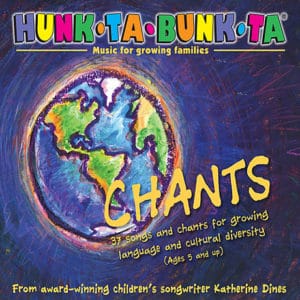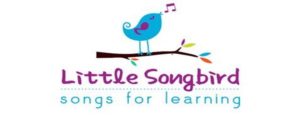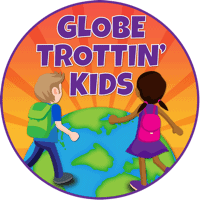Sharing Many Cultures in the Elementary Classroom
We’re excited to share a guest post written by Lisa Heintz from Little Songbird: Songs for Learning as part of our Global Learning in the Elementary Classroom miniseries. Lisa has lots of great suggestions for global activities, books, and songs.
Sharing Many Cultures in the Elementary Classroom
Make no mistake: True “multicultural” or “global” education takes creativity, effort, time, and self-reflection. Developing resources, knowledge, insight, and materials to encourage diversity is neither inherent nor instant, but it has never been more important for our children. They need to develop a strong sense of self, self-esteem, and respect for themselves while developing the same respect for those who differ.
Our classrooms and communities are quickly reflecting dynamic changes. People from around the globe are joining our country, bringing with them differing values, customs, music, food, languages, music, traditions, literature, and ways of life.
How can we, the adult models, best ensure a safe, inclusive, multicultural environment for our children?
Here are three surefire methods for educators.

Disclosure: This post contains affiliate links. By clicking through and making a purchase, we receive a small commission at no extra charge to you. All proceeds help support our free global education website. Thank you!
1. Learn what you don’t know, and be open to discovering your own misinformation.
Just as a general practitioner is not a specialist, we cannot be expected to know about every culture. Embrace your curiosity and do the research–beginning with the cultures represented in front of you (no need to tackle the world all at once!).
Many years ago, I was astonished to discover that Cinco de Mayo is not a big holiday in Mexico (outside of Puebla, where the meager Mexican troops won the battle against the huge French army); it was co-opted by American restaurateurs as an opportunity to reach Hispanic customers by promoting tequila and Mexican food. And I’ll bet you’ve already figured out what happened to St. Patrick’s Day!
Suggested Activities, Books & Songs
Become familiar with the beliefs, values, customs, foods, traditions (customs used on specific occasions), and holidays of cultures related to your students and teaching community.
- Request that parents complete a survey early in the year that includes information about their country of origin and culture. How do they honor birthdays? What holidays do they celebrate? What are their beliefs regarding discipline and teaching? In this survey, ask for volunteers who will come to class and share something of their culture (i.e., food, dress, music, craft, storytelling, books) throughout the year.
- Visit import shops and ethnic markets; attend events, book talks, and festivals of the relevant culture/s in your class, then invite presenters from those places to speak with your students.
- Develop “pen pal” relationships with school children in other countries, beginning with those from countries or regions represented by your own students. For example, PenPal Schools – created by and for teachers.
- Incorporate what you learn into daily experiences.
- Encourage dialogue about cultural similarities and differences.
- A School Like Mine: A Celebration of Schools Around the World by DK Children
- We All Sing With the Same Voice by J. Philip Miller
- “Under One Sky” from Love Makes a Family by Two of a Kind
- “Ni Hao, Jambo, Hola” (“Hello” in multiple languages) from Singing All the Way Home by Liz Buchanan
2. Cultivate an attitude of acceptance and respect for different cultures.
“What kids learn…when it comes to interactions with those who are different from them translates into how well they will manage life in the global marketplace.” ~Matthew Lynch, The Edvocate
As an adult, your attitude and actions toward differing cultures are what children will learn and imitate–even when your words are contrary to your actions.
Multiculturalism is more than sampling fried rice, singing “La Cucaracha” on Cinco de Mayo, or honoring African Americans for one month each year (surface-level practices often referred to as “pseudo-multiculturalism”). It is about paying close attention to our own biases and misinformation (we all have them), educating ourselves about cultural differences, and engaging actively in conversations and activities with the intent to encourage exploration and inclusion beyond “tolerance,” and toward a genuine appreciation for our differences. This includes comparing and contrasting similarities and differences without judgment.
Cultural biases have been identified in children as young as nine months, and by the time children are nine years old, their self-identity and perception of others who differ from them are already solidified. It is never too early to broaden a mind!
Suggested Activities, Books & Songs
- Invite parents, grandparents, neighbors, and community members to come to your class to share a tradition, food, book, song, etc. Be sure to invite someone from each of the different cultures represented in your class. If no one is available, make the effort to present something from that culture so that all are represented throughout the course of the year. (Invite an import retailer to bring or loan you a few items that represent a particular culture.)
- Be sure that books and images used in your classroom reflect a variety of ethnicities and cultures, particularly those that reflect your student makeup. Locate travel and National Geographic magazines at used book sales/stores, or online, and put the photos to use by adding captions or quotes appropriate to your class and posting them throughout the year. This could also include displays of cultural artwork created by students.
- Play music from different cultures and countries during transition times, indoor recess, or free time. Ask parents/community members, check your library and ethnic stores, or visit Little Songbird or Mama Lisa.
- Create artwork or crafts utilizing techniques and designs from other cultures.
- Invest in multicultural (skin-tone) crayons. It is important for children to recognize their own identity as well as that of others and to be able to accurately reflect themselves in their artwork.
- Read books in other languages or from other countries. Many popular children’s books have been translated into other languages and may be found at your local library (or through their exchange services with other libraries) or bookstore. Whenever possible, obtain a recording of the book so that students may hear their own (or other) language as it is spoken fluently in the context of a story. Enjoy comparing and contrasting the illustrations and words in simple texts.
- Incorporate foods and snacks from other cultures on a regular basis. Be sure to give it context by discussing what the food is, how it is made, and why its ingredients may be of importance (i.e., root vegetables grow easily in that country; salt has a special significance, etc.).
- Children Just Like Me by DK Children
- The Kids’ Multicultural Cookbook (Kids Can!) by Deanna F Cook
- Global Art by Mary Ann Kohl
- Throw Your Tooth on the Roof: Tooth Traditions from Around the World by Selby Beeler
- “Funga A La Feeya” (West Africa) from Chants Around the World by Katherine Dines

- “Assalam Aleykum” (Peace Be Upon You) by DariaMusic
3. Infuse your choices, responses, and activities with a multi-cultural perspective.
Through intentional knowledge-gathering, consideration of children’s traditions, understanding of parenting styles that differ from your own, and active integration of global content into curriculum and activities, you will provide a safe, supportive, inclusive learning environment for children. Always model the type of attitude and behavior you wish to see in your children.
One year I had a student from China who joined our class a month into the school year. He spoke no English and was struggling to make friends. When we were on the playground, he frequently spit in the sandbox, much to the horror of the other children and teachers. Unbeknownst to us, spitting on the ground is quite common in China (as it was in the US decades before the Tuberculosis scare deemed it dangerous, which eventually gave way to “ill-mannered”), and he was simply engaging in a familiar action.
Once this was understood, we could offer him more appropriate places to spit (garbage can or toilet), and eventually, he realized no one else was doing it and stopped. This one little tidbit of cultural information helped us see the world from his perspective and be more positively responsive rather than disdainful.
Suggested Activities, Books & Songs
- Recognize that teaching, acceptable behaviors, and discipline styles will vary from home to home, and that differences may be more prevalent with some families from different cultures. Knowing and acknowledging these variations may help you interpret a child’s behavior differently and respond more sensitively. While you must act in accordance with school, district, and professional best practices, understanding the concerns of parents whose culture and values may differ notably will help you work with the families whose students are in need of additional academic, emotional or behavioral aid. Fostering this understanding goes a long way toward increasing cooperation and success.
- Utilize cooperative learning to encourage common discourse and mutual learning between students of all cultures and experiences. Provide a role for each member of the group so that all have equal value.
- Kids Songs Around the World: A Mama Lisa Book by Lisa Yannucci
- “Part of One Family” from Pizza Pizzazz by Peter & Ellen Allard
Additional Suggested Children’s Books
- The Kids’ Multicultural Craft Book: 50 Creative Activities from 30 Countries by Roberta Gould
- The International Cookbook for Kids by Matthew Locricchio
- Children Just Like Me: Celebrations by Anabel Kindersley
Lisa Heintz is an elementary educator and edupreneur. Her site, Little Songbird: Songs for Learning (LSS4L), currently provides nearly 1,000 song and album downloads of quality children’s music from a variety of independent artists. LSS4L is excited to be adding more music, book recommendations, and lesson plans/activities to accompany the songs on the site to make integrating music into daily life and curriculum a 1-stop shopping experience!

Do you know of children’s song recordings in languages other than English that we should consider for our site? Let us know: Lisa@LitttleSongbird.com.
Catch up on other posts in the series:
Globe Trottin’ Kids introduces its new global learning website for students and educators.
Joy Sun Bear tells us about their mission, website, upcoming book series, and educational learning activities.
Kid World Citizen shares four ways to introduce global learning into a classroom.
Globe Trottin’ Kids highlights the need for children to learn about the world through their own exploration and play and features a round-up of learning resources.
Resources & Credits
- Creating A Multicultural Classroom Environment, Childcare Education Institute Volume 3, Issue 12
- Babies Develop Racial Bias as Young as Six Months Old, Study Shows, Rich Schapiro, New York Daily News
- 6 Ways to Implement a Real Multicultural Education in the Classroom, @oldbrainteacher, The Edvocate
- Anti-Bias Curriculum by Louise Derman-Sparks
- Celebrate! An Anti-Bias Guide to Including Holidays in Early Childhood Programs by Julie Bisson
- Flicker CC 2.0: Military Voices by The U.S. Army, Children singing at school in Kenya by Trocaire

